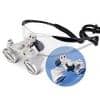5/28/08
According to a study published in the March/April 2008 issue of General Dentistry, parents and caretakers more often than not do not know what to do with a traumatically affected tooth and do not take proper steps to respond to the injury, which can affect their child’s oral health permanently.
Two kinds of traumatic tooth loss can occur during childhood: The child can lose a primary tooth prematurely, or lose a permanent tooth.
"With primary or ‘baby’ teeth [the mistake parents or caretakers make] is that they often don’t believe that the loss of a primary tooth is especially important since a permanent tooth is supposed to come in and replace it anyway," said AGD spokesperson, Tom A. Howley, Jr, DDS, MAGD. “It is important to keep baby teeth because they maintain the spacing for permanent teeth. Keeping baby teeth in place will also increase the likelihood that permanent teeth come in straight.”
According to the study’s lead author, Lucianne Cople Maia, DDS, MSD, PhD, another mistake parents and caretakers make is that they believe that the tooth can always be replanted. In some cases, the tooth can be splinted back in. However, treatment still should be sought for a prematurely lost primary tooth.
“The area where a tooth has been lost should be checked for bone fractures or other damage among other concerns,” said Howley.
When it comes to the loss of a permanent tooth, parents and caretakers often delay in seeking treatment or fail to store the tooth properly en route to the hospital.
“The chance for success is directly related to the amount of trauma and the length of time the tooth is outside of the oral cavity,” said AGD spokesperson Mark Donald, DMD, FAGD. “The tooth should be placed in a moist solution like milk while en route to the dentist."
Maia added that the ideal time between tooth loss and replantation is a period no longer than 30 minutes.
The study reports that young children tend to lose permanent teeth prematurely the most, due to the fact that their tooth roots and gums are still developing. Parents need to be aware that as a child becomes active, the chances of trauma to teeth will increase. If and when trauma to the oral cavity occurs, the parent should get the child to the dentist as quickly as possible.
Parents can prepare for potential dental trauma by creating an emergency care kit that includes the dentist’s phone number, saline solution, a handkerchief, gauze, a small container with a lid, and ibuprofen. It is not advised to include aspirin, since it can cause excessive bleeding in an emergency.
According to the report, the proper response to a traumatically affected tooth is to:
• Remain calm and assess the injury;
• control the bleeding;
• determine if the injury involves more that just tooth loss and needs medical attention;
• call and arrange for professional care by the child’s dentist; and
• if the loss tooth is a permanent tooth, first make sure it is clean by rinsing it off with milk, then replant it immediately. Hold it in place en route to receiving professional care. If it is impossible to replant the tooth, ask the dentist what medium to store the tooth in. The possibilities range from water to milk to the child’s saliva. Let the dentist give directions on which solution to use.
[Science Daily, May 26, 2008]


